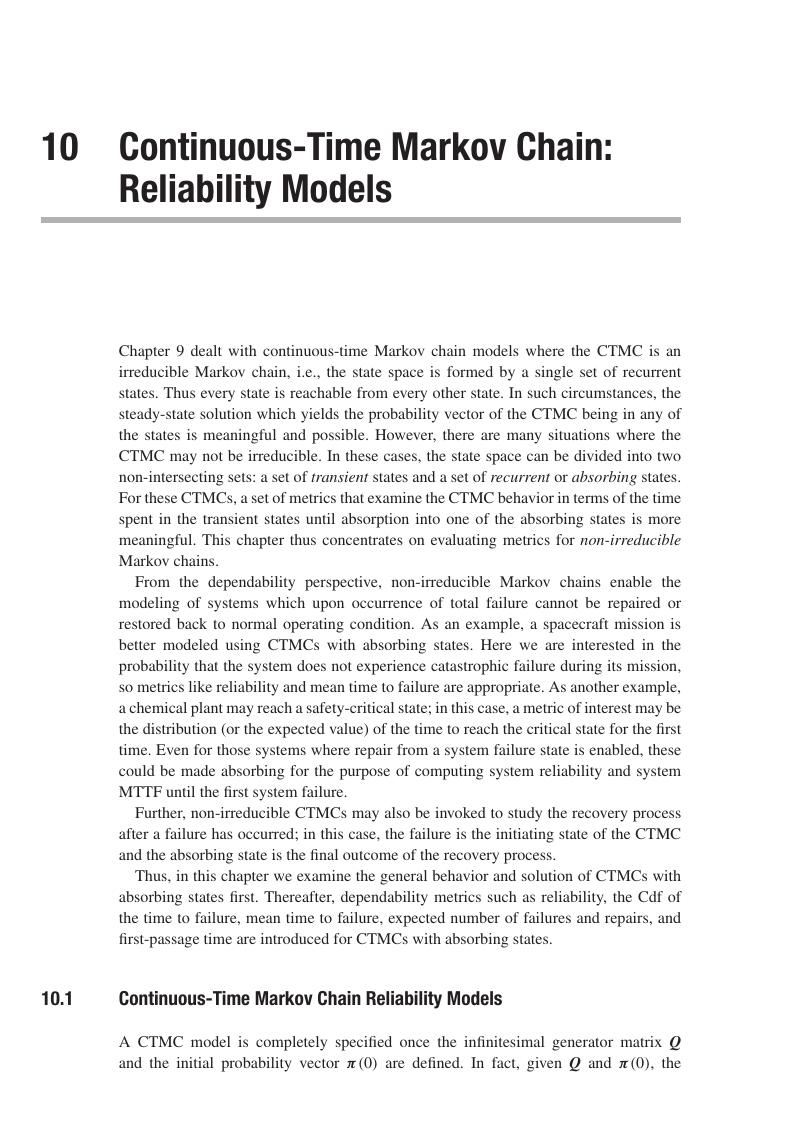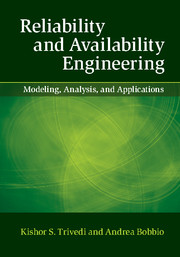Book contents
- Frontmatter
- Contents
- Preface
- Part I Introduction
- Part II Non-State-Space (Combinatorial) Models
- Part III State-Space Models with Exponential Distributions
- 9 Continuous-Time Markov Chain: Availability Models
- 10 Continuous-Time Markov Chain: Reliability Models
- 11 Continuous-Time Markov Chain: Queuing Systems
- 12 Petri Nets
- Part IV State-Space Models with Non-Exponential Distributions
- Part V Multi-Level Models
- Part VI Case Studies
- Author Index
- Subject Index
- References
10 - Continuous-Time Markov Chain: Reliability Models
from Part III - State-Space Models with Exponential Distributions
Published online by Cambridge University Press: 30 August 2017
- Frontmatter
- Contents
- Preface
- Part I Introduction
- Part II Non-State-Space (Combinatorial) Models
- Part III State-Space Models with Exponential Distributions
- 9 Continuous-Time Markov Chain: Availability Models
- 10 Continuous-Time Markov Chain: Reliability Models
- 11 Continuous-Time Markov Chain: Queuing Systems
- 12 Petri Nets
- Part IV State-Space Models with Non-Exponential Distributions
- Part V Multi-Level Models
- Part VI Case Studies
- Author Index
- Subject Index
- References
Summary

- Type
- Chapter
- Information
- Reliability and Availability EngineeringModeling, Analysis, and Applications, pp. 357 - 422Publisher: Cambridge University PressPrint publication year: 2017

